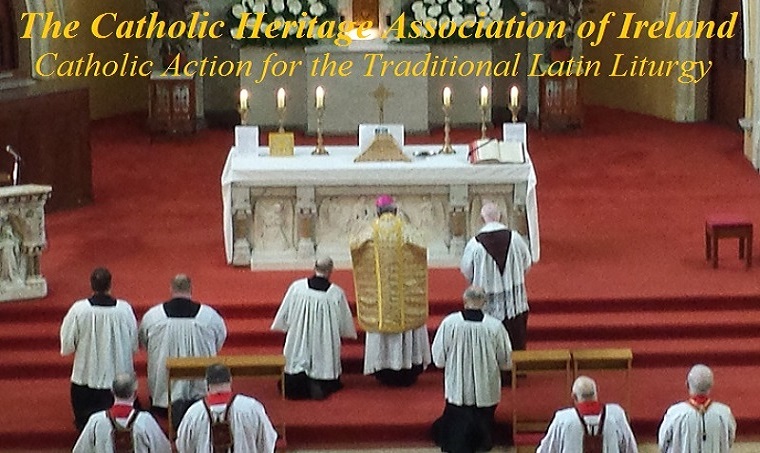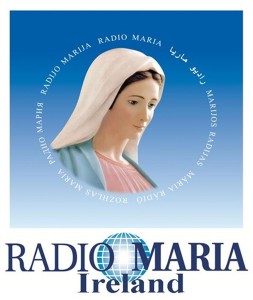In arranging Latin Masses in the Diocese of Kildare and Leighlin one is hit by a number of obstacles, not least the physical impossibility of such celebrations that seems to be a key element of the "liturgical requirements of Vatican II" as interpreted by the local ecclesiastical architects and authorities, as well as clerical intransigence. However, we are making best efforts to make pilgrimages to sites in the Diocese that bring us closer to various elements of our Catholic heritage. One of those themes has been the former Cistercian houses in the Diocese. We were blessed to have our annual retreat directed this year by a monk of Heiligenkreutz, who also celebrated Mass in Doonane, and we have been blessed to have organised Mass in Duiske Abbey, one of the few restored Cistercian Abbey Churches in Ireland, which is towards the south of the Diocese of Kildare and Leighlin. This series is going to trace those Cistercian houses in the Diocese.

Prior to the Norman Invasion of Ireland in 1169, the Cistercian Order had established 15 houses in Ireland: Mellifont, Bective, Inislounaght, Dublin, Monasteranenagh, Baltinglass (K&L;), Newry, Kilbeggan, Abbeydorney, Boyle, Jerpoint, Holycross, Aghamanister. Of those, Baltinglass and is within the boundaries of the present Diocese of Kildare and Leighlin. Only St. Mary's at Dublin was not a filiation of Mellifont.
In the years following the Norman Invasion, 9 'Norman' Cistercian Houses were established: Inch, Dunbrody, Grey Abbey, Comber, Tintern, Graignamanagh (KNL), Abington, Abbeylara, Tracton. Of those, Graignamanagh (Duiske) was within the boundaries of the Diocese.
In the years following the Invastion there were also 10 'Irish' Cistercian foundations: Assaroe, Midleton, Corcumroe, Killeny (K&L;), Kilcooley, Monasterevin (K&L;), Abbeyleix (K&L;), Abbeyknockmoy, Abbeyshrule, Macosquin. Both Abbeyleix and Monasterevin lie within the bounds of the Diocese.
To be exact, the Abbeys of Baltinglass, Killeny, Abbeyleix and Graignamanagh are in the Diocese of Leighlin and the Abbey of Monasterevin is in the Diocese of Kildare.
Baltinglass (1148) was a daughter house of Mellifont (1142) and mother house of Jerpoint (1160).
Killeny (1162), which was just to the north of Graignamanagh, was suppressed in 1228 at the time of the visitation of Stephen of Lexington.
Monasterevin (1172) was a daughter house of Baltinglass. It was a continuation of the monastic life of St. Evin at Rosglas.
Abbeyleix (1183) was established thanks to a grant by Conor O'More, Prince of Laois and, according to Sir James Ware (The Antiquities and History of Ireland), was a daughter house of Baltinglass.
Graignamanagh (1204) was a daughter house of Stanley in Wales.
Discipline in the Cistercian Houses in Ireland was a concern of the General Chapter, which, in 1216 sent the Abbot of Clairvaux to investigate the situation at Mellifont, its filiation. He was met by closed gates and rebellious monks. The same was true of the visitation of Jerpoint, where the abbot was supported in his dissent by the abbots of Baltinglass, Killeny, Kilbeggan and Bective. These houses were later to be involved in what was known as the
Conspiratio Mellifontis. The Chapter General deposed the abbots of Mellifont and Jerpoint and new visitors were appointed but the issue of discipline in certain Irish houses continued until 1228, when the Abbot of Clairvaux appointed Stephen of Lexington, the Abbot of Stanley (mother house of Graignamanagh) as his deputy for the visitation. Stephen was to be elected Abbot of Clairvaux itself in 1249. He held a colloquium of abbots at Graignamanagh and a chapter of abbots at St. Mary's, Dublin.
Stephen reported to Pope Gregory IX that everything of Cistercian life had disappeared from the Irish monasteries except the wearing of the habit: "Nam in abbiciis Hiberniae censura et ordo noster excepto habito vix in aliquo seruabitur."
One of the outcomes of the visitation was that most of the Irish monasteries were given new mother houses outside Ireland. Baltinglass, (Jerpoint) and Monasterevin were to be daughter houses of Fountains Abbey in England, where Eva, the daughter of Diarmuid MacMurrough, was patroness and was buried. After his visitation, French and Latin were to be the two languages of all Cistercian houses in Ireland. While discipline markedly improved after 1228, the Chapter General of 1271 referred to the "quaestio taediosa" of Irish indiscipline and by 1274 the houses in Ireland had been returned to the supervision of their original mother houses.
St. Malachy of Armagh, pray for us!
St. Bernard of Clairvaux, pray for us!










































































